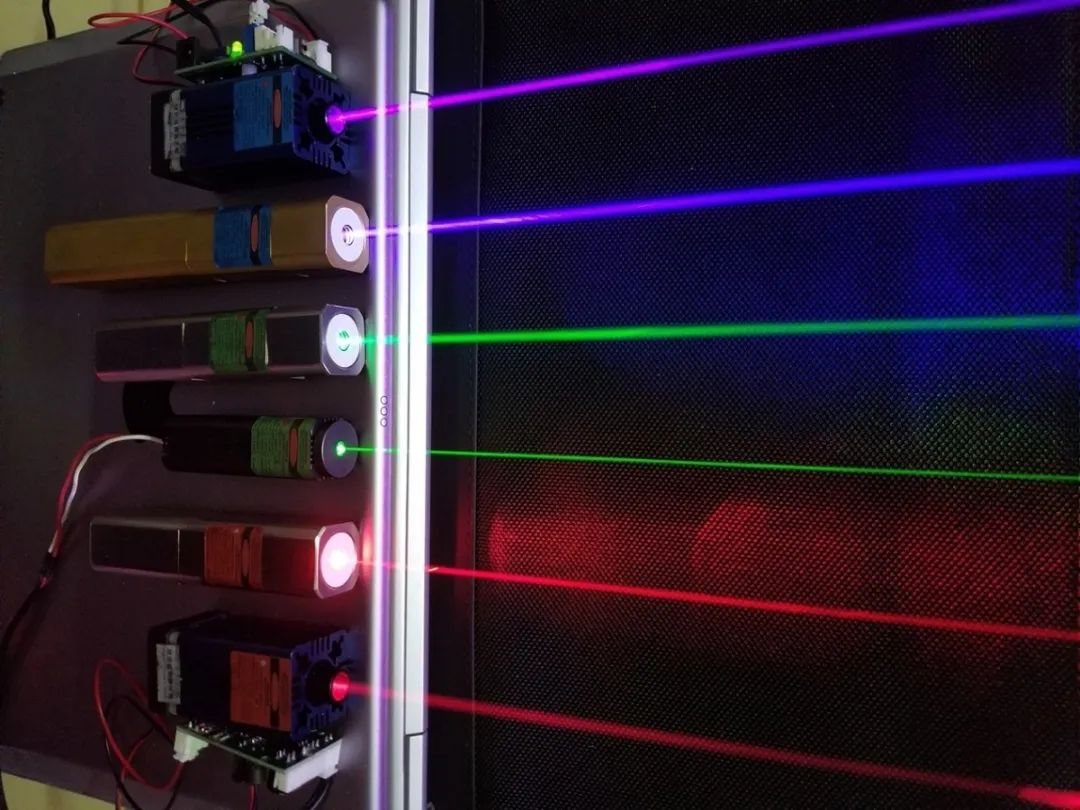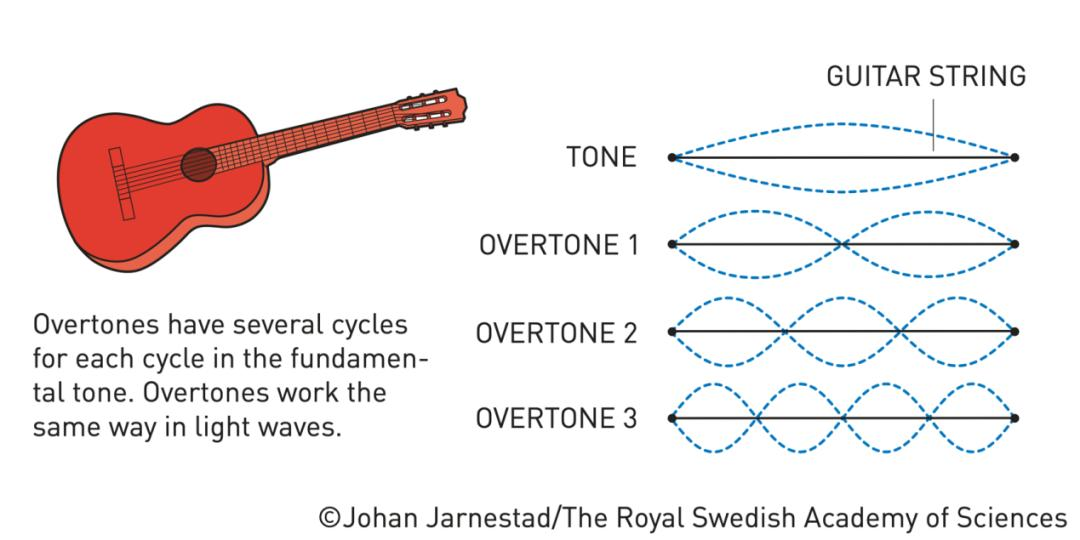Subscribe to Our Social Media For Prompt Post
In a momentous announcement on the evening of October 3, 2023, the Nobel Prize in Physics for the year 2023 was unveiled, recognizing the outstanding contributions of three scientists who have played pivotal roles as pioneers in the realm of attosecond laser technology.
The term "attosecond laser" derives its name from the incredibly brief timescale it operates on, specifically in the order of attoseconds, corresponding to 10^-18 seconds. To grasp the profound significance of this technology, a fundamental comprehension of what an attosecond signifies is paramount. An attosecond stands as an exceedingly minute unit of time, constituting one billionth of a billionth of a second within the broader context of a single second. To put this into perspective, if we were to liken a second to a towering mountain, an attosecond would be akin to a single grain of sand nestled at the mountain's base. In this fleeting temporal interval, even light can barely traverse a distance equivalent to the size of an individual atom. Through the utilization of attosecond lasers, scientists gain the unprecedented capability to scrutinize and manipulate the intricate dynamics of electrons within atomic structures, akin to a frame-by-frame slow-motion replay in a cinematic sequence, thereby delving into their interplay.
Attosecond lasers represent the culmination of extensive research and concerted efforts by scientists, who have harnessed the principles of nonlinear optics to craft ultrafast lasers. Their advent has furnished us with an innovative vantage point for the observation and exploration of the dynamic processes transpiring within atoms, molecules, and even electrons in solid materials.
To elucidate the nature of attosecond lasers and appreciate their unconventional attributes in comparison to conventional lasers, it is imperative to explore their categorization within the broader "laser family." Classification by wavelength places attosecond lasers predominantly within the range of ultraviolet to soft X-ray frequencies, signifying their notably shorter wavelengths in contrast to conventional lasers. In terms of output modes, attosecond lasers fall under the category of pulsed lasers, characterized by their exceedingly brief pulse durations. To draw an analogy for clarity, one can envisage continuous-wave lasers as akin to a flashlight emitting a continuous beam of light, while pulsed lasers resemble a strobe light, rapidly alternating between periods of illumination and darkness. In essence, attosecond lasers exhibit a pulsating behavior within the illumination and darkness, yet their transition between the two states transpires at an astonishing frequency, reaching the realm of attoseconds.
Further categorization by power places lasers into low-power, medium-power, and high-power brackets. Attosecond lasers achieve high peak power due to their extremely short pulse durations, resulting in a pronounced peak power (P) – defined as the intensity of energy per unit time (P=W/t). Although individual attosecond laser pulses may not possess exceptionally large energy (W), their abbreviated temporal extent (t) imparts them with elevated peak power.
In terms of application domains, lasers span a spectrum encompassing industrial, medical, and scientific applications. Attosecond lasers primarily find their niche within the realm of scientific research, particularly in the exploration of rapidly evolving phenomena within the domains of physics and chemistry, offering a window into the microcosmic world's swift dynamic processes.
Categorization by laser medium delineates lasers as gas lasers, solid-state lasers, liquid lasers, and semiconductor lasers. The generation of attosecond lasers typically hinges on gas laser media, capitalizing on nonlinear optical effects to engender high-order harmonics.
In summation, attosecond lasers constitute a unique class of short-pulse lasers, distinguished by their extraordinarily brief pulse durations, typically measured in attoseconds. As a result, they have become indispensable tools for observing and controlling the ultrafast dynamic processes of electrons within atoms, molecules, and solid materials.
The Elaborate Process of Attosecond Laser Generation
Attosecond laser technology stands at the forefront of scientific innovation, boasting an intriguingly rigorous set of conditions for its generation. To elucidate the intricacies of attosecond laser generation, we begin with a concise exposition of its underlying principles, followed by vivid metaphors derived from everyday experiences. Readers unversed in the intricacies of the relevant physics need not despair, as the ensuing metaphors aim to render the foundational physics of attosecond lasers accessible.
The generation process of attosecond lasers primarily relies on the technique known as High Harmonic Generation (HHG). Firstly, a beam of high-intensity femtosecond (10^-15 seconds) laser pulses is tightly focused onto a gaseous target material. It's worth noting that femtosecond lasers, akin to attosecond lasers, share the characteristics of possessing short pulse durations and high peak power. Under the influence of the intense laser field, electrons within the gas atoms are momentarily liberated from their atomic nuclei, transiently entering a state of free electrons. As these electrons oscillate in response to the laser field, they eventually return to and recombine with their parent atomic nuclei, creating new high-energy states.
During this process, electrons move at extremely high velocities, and upon recombination with the atomic nuclei, they release additional energy in the form of high harmonic emissions, manifesting as high-energy photons.
The frequencies of these newly generated high-energy photons are integer multiples of the original laser frequency, forming what is termed high-order harmonics, where "harmonics" denotes frequencies that are integral multiples of the original frequency. To attain attosecond lasers, it becomes necessary to filter and focus these high-order harmonics, selecting specific harmonics and concentrating them into a focal point. If desired, pulse compression techniques can further abbreviate the pulse duration, yielding ultra-short pulses in the attosecond range. Evidently, the generation of attosecond lasers constitutes a sophisticated and multifaceted process, demanding a high degree of technical prowess and specialized equipment.
To demystify this intricate process, we offer a metaphorical parallel grounded in everyday scenarios:
High-Intensity Femtosecond Laser Pulses:
Envision possessing an exceptionally potent catapult capable of instantaneously hurling stones at colossal speeds, akin to the role played by high-intensity femtosecond laser pulses.
Gaseous Target Material:
Picture a tranquil body of water that symbolizes the gaseous target material, where each droplet of water represents myriad gas atoms. The act of propelling stones into this body of water analogously mirrors the impact of high-intensity femtosecond laser pulses on the gaseous target material.
Electron Motion and Recombination (Physically Termed Transition):
When femtosecond laser pulses impact the gas atoms within the gaseous target material, a significant number of outer electrons are momentarily excited to a state where they detach from their respective atomic nuclei, forming a plasma-like state. As the system's energy subsequently diminishes (since the laser pulses are inherently pulsed, featuring intervals of cessation), these outer electrons return to their vicinity of the atomic nuclei, releasing high-energy photons.
High Harmonic Generation:
Imagine each time a water droplet falls back to the lake's surface, it creates ripples, much like high harmonics in attosecond lasers. These ripples have higher frequencies and amplitudes than the original ripples caused by the primary femtosecond laser pulse. During the HHG process, a powerful laser beam, akin to continuously tossing stones, illuminates a gas target, resembling the lake's surface. This intense laser field propels electrons in the gas, analogous to ripples, away from their parent atoms and then pulls them back. Each time an electron returns to the atom, it emits a new laser beam with a higher frequency, akin to more intricate ripple patterns.
Filtering and Focusing:
Combining all these newly generated laser beams yields a spectrum of various colors (frequencies or wavelengths), some of which constitute the attosecond laser. To isolate specific ripple sizes and frequencies, you can employ a specialized filter, akin to selecting desired ripples, and employ a magnifying glass to focus them onto a specific area.
Pulse Compression (if necessary):
If you aim to propagate ripples faster and shorter, you can accelerate their propagation using a specialized device, reducing the time each ripple lasts. The generation of attosecond lasers involves a complex interplay of processes. However, when broken down and visualized, it becomes more comprehensible.

Image Source: Nobel Prize Official Website.

Image Source: Wikipedia

Image Source: Nobel Price Committee Official Website
Disclaimer for Copyright Concerns:
This article has been republished on our website with the understanding that it can be removed upon request if any copyright infringement issues arise. If you are the copyright owner of this content and wish to have it removed, please contact us at sales@lumispot.cn. We are committed to respecting intellectual property rights and will promptly address any valid concerns.
Original Article Source: LaserFair 激光制造网
Post time: Oct-07-2023
